Exploring the NFT Creator Program: Opportunities Ahead
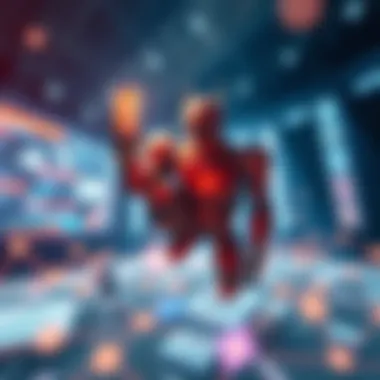
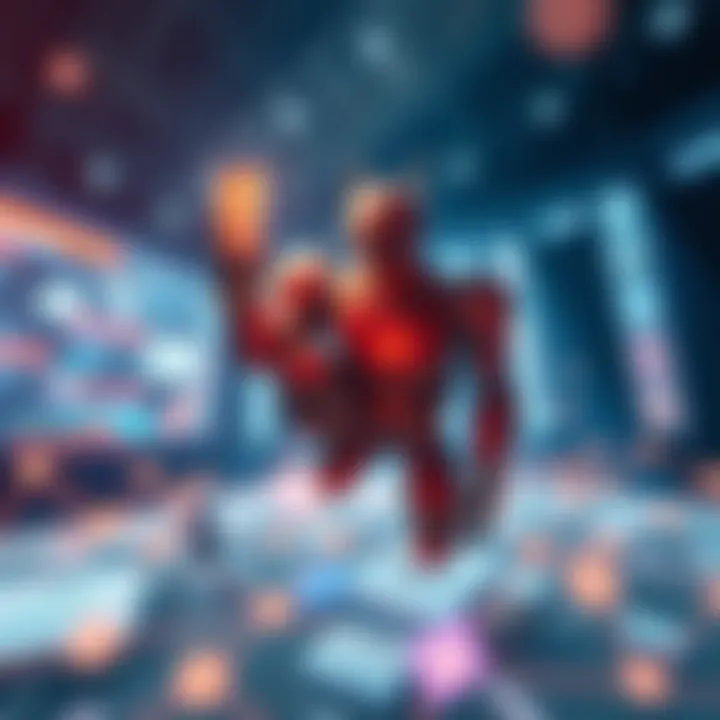
Intro
The landscape of digital assets has shifted dramatically with the advent of Non-Fungible Tokens (NFTs). These unique digital items have brought a new kind of ownership and creativity to the world, and the NFT Creator Program is pivotal in these developments. But what exactly is it, and how does it function? This article aims to dissect the NFT Creator Program, shedding light on its architecture, the advantages it offers to creators, its potential challenges, and its implications for the broader digital asset ecosystem.
Creators today stand at the intersection of technology and art, where their work can be tokenized and sold as digital assets. The concept of ownership has been irrevocably changed by NFTs, introducing a richer, more complex narrative surrounding digital artistry. The digital space is alive with opportunities for artists, collectors, and investors, each seeking to navigate the nuances of this creative economy.
Throughout our exploration, we will look into current market trends to provide a backdrop against which this new digital phenomenon unfolds. We’ll also analyze historical patterns, investment strategies to consider, and risk management techniques crafted for today’s digital marketplace. By understanding these elements, individuals interested in this field—traders, investors, analysts, and tech enthusiasts—can better assess the implications of NFT creator programs and what they mean for the future of digital creativity and ownership.
Preface to NFT Creator Programs
NFTs, or Non-Fungible Tokens, have taken the digital world by storm, creating new pathways for artists, musicians, and creators of all kinds to monetize their work. The concept of an NFT Creator Program is paramount, offering a structured way for these individuals to engage with their audience, showcase their talents, and capitalize on their creativity.
Defining NFTs and Their Significance
Before delving deeper, let’s establish what NFTs are. In simple terms, NFTs are unique digital assets that represent ownership of specific items or content on the blockchain. Unlike cryptocurrencies such as Bitcoin, NFTs cannot be exchanged on a one-for-one basis due to their distinct qualities and features. The significance of NFTs lies in their ability to verify authenticity and ownership, making them pivotal in the realms of digital art, gaming, and collectibles. Creators can sell limited editions of their work, ensuring that scarcity drives demand. This shift allows artists to gain financial benefits without relying solely on traditional distribution methods.
"NFTs breathe new life into art and ownership, where every click can potentially turn creativity into currency."
The Rise of Creator Programs
In the past few years, we’ve witnessed a robust emergence of creator programs designed explicitly for NFT artists. These programs are essentially support systems that provide necessary tools and frameworks for creators to thrive. Here’s where things get interesting: platforms like OpenSea, Rarible, and Foundation have rolled out tailored Creator Programs, allowing participants to mint, sell, and manage their NFTs with relative ease.
The rise of these programs is not just a trend, but a response to a growing need for monetization avenues in a digital-first world. They facilitate community engagement by offering features that help creators build and maintain their audiences. Furthermore, creators can tap into valuable resources such as marketing support, educational materials, and networking opportunities. They can also benefit from feedback loops, enhancing their work based on community input.
As we navigate this discussion, understanding the nuances within NFT Creator Programs becomes crucial. It’s not just about making a sale; it’s about establishing a brand, nurturing relationships, and redefining what it means to create in the digital age.
By unpacking these facets, readers will gain comprehensive insights into how these programs work and the implications they hold for the broader digital landscape.
Mechanics of NFT Creation
The mechanics of NFT creation play a pivotal role in understanding the broader NFT landscape. Digital artists and creators need to grasp the underlying processes to make the most of the opportunities that NFT creator programs offer. By knowing how NFTs are minted and the implications of the blockchain systems they operate on, creators can enhance their visibility, reach, and ultimately, their profitability.
Technical Aspects of NFT Minting
Minting an NFT involves converting a digital file into a unique token on the blockchain. This process is essential because it ensures ownership and authenticity. Without this step, digital art could simply be copied, reducing its value.
When an artist decides to mint an NFT, they typically go through the following steps:
- File Selection: The creator chooses a digital asset, which could be artwork, music, or even a video.
- Metadata Creation: They then create metadata that describes the asset. Metadata includes details like title, description, and attributes that define the piece's rarity.
- Smart Contract Deployment: This is perhaps one of the most technical parts. Creators deploy a smart contract, which is a set of rules around how the NFT operates, including transferability and royalties.
- Listing on Marketplace: Finally, the newly minted NFT needs to be listed on a marketplace, where it can be viewed and bought by potential collectors.
"By understanding these technical aspects, creators not only protect their work but also increase their chances of sales."
However, creators must remain cognizant of the fact that each blockchain has its unique set of rules, fees, and transaction times that can impact the minting process.
Choosing the Right Blockchain
Choosing the right blockchain is another critical aspect of NFT creation. Not all blockchains are created equal when it comes to the intricacies of NFT minting. Factors such as costs, speed, and community support come into play. Here are some of the leading blockchain platforms:
- Ethereum: Known for being the pioneer in the NFT space, Ethereum provides a robust ecosystem with various marketplaces like OpenSea and Rarible. However, the gas fees can be hefty, especially during peak times.
- Binance Smart Chain: Offers lower fees and faster transactions compared to Ethereum but lacks some of the established marketplaces.
- Solana: Gaining popularity for its high throughput and low transaction costs, Solana is becoming a favorite for creators looking to mint NFTs without breaking the bank.
When selecting a blockchain, creators should consider:
- Transaction Fees: Higher fees could eat into profits.
- Network Security: A secure blockchain reduces risks for creators.
- User Adoption: A larger user base can mean greater visibility for the minted NFTs.
Benefits of Participating in NFT Creator Programs
The participation in NFT creator programs has become a transformative opportunity for digital artists and creators alike. These programs not only provide avenues for artists to monetize their work but also allow them to cultivate communities and brands that resonate in the digital landscape. As the blockchain continues to evolve and integrate into various industries, embracing NFT platforms opens the door for creators to capitalize on their creativity in unprecedented ways.
Monetizing Digital Creativity
Understanding Royalties
Royalties are the lifeblood of many NFT creator programs. Unlike traditional art markets, where an artist receives payment only upon initial sale, NFT creators often set up royalties to earn a percentage of any future sales. This continuous revenue stream is a significant departure from conventional arts and can add up over time. Each time a work is resold, the creator earns a set percentage, which can be anywhere from 5% to 30% or more, depending on platform policies.

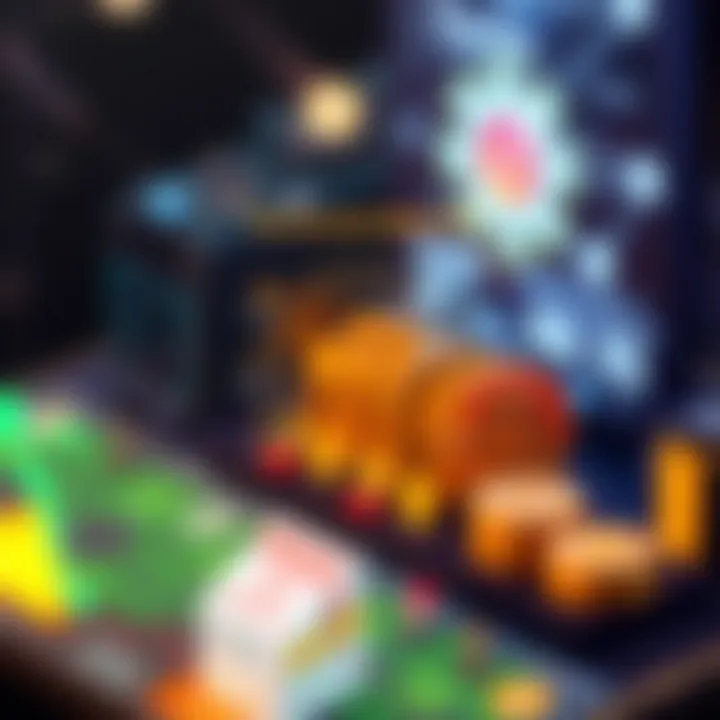
The flexibility of royalties aligns perfectly with the ethos of supporting artists in the digital realm. It means that as the value of digital art increases, so does the creators’ earnings. This feature not only encourages creators to invest in their art but also fosters a deeper connection between them and their audience. However, a downside can emerge if the NFT market becomes volatile; a fall in resale prices can impact expected royalties.
Resale Benefits
Resale benefits in NFT programs act as another layer of attractiveness for creators. Every time a digital artwork is sold on secondary markets, the original creator can see a fraction of that sale. This process significantly complements the notion of ongoing value and investment in one’s work. For creators, having their art continue to appreciate and resale can be a comforting safety net.
Additionally, the structure promotes ethical resale, which can enhance an artist's reputation. If a created piece gains value, it showcases the artist's enduring influence in the digital space. That said, there can be potential limitations, depending on the specific marketplace’s rules regarding how royalties and resale benefit structures are implemented. Some platforms may have restrictive clauses that could hinder this benefit.
Building a Community and Brand
Creating and selling NFTs is much more than just transactions; it’s about community. Many artists leverage NFT creator programs to engage their fans and establish loyal followings. By directly connecting with audiences, creators can cultivate communities around their work, gaining insights into what resonates with their fans.
Through social media platforms and community forums, artists can showcase their journey and foster a narrative that engages potential buyers. Utilizing platforms like Discord or Reddit allows them to brainstorm new ideas and receive feedback on their creations. This engagement also humanizes the creative process, making fans more likely to support their work financially.
Furthermore, branding in the NFT space is quite vital. Creators who align their personal stories and artistic styles with a cohesive brand identity are more likely to stand out in a crowded market. Artists become recognizable figures, which can greatly enhance their marketability and overall success. Hence, navigating NFT creator programs becomes an essential strategy not only for making sales but for long-term viability in the rapidly evolving digital art world.
Challenges Faced by NFT Creators
Navigating the world of non-fungible tokens is no walk in the park. As exciting as it may seem to jump into the NFT creator programs, several hurdles present themselves along the journey. Understanding these challenges can help artists, designers, and technologists alike make informed decisions while contributing to the blockchain ecosystem. It is imperative to recognize these difficulties not just as mere obstacles but as pivotal learning experiences that can shape better practices and innovative solutions in the ever-expanding space of digital ownership.
Market Saturation
One major challenge looming over NFT creators is the sheer saturation of the market. It's akin to taking a dip in a vast ocean where everyone is trying to make their splash. As more creators flock to digital art, the competition becomes fierce, making it increasingly difficult for individual pieces to stand out. In the early days of NFTs, a unique digital work often caught the eye and commanded high prices. Now, though, the landscape resembles a bustling city street where new shops pop up daily, and it's tough to get noticed.
Several factors contribute to this saturation:
- Accessibility of Tools: The tools and platforms that facilitate NFT creation have become increasingly user-friendly. This accessibility leads to a flood of new artists and experiments entering the market.
- Diverse Digital Art Forms: From music to video art, and everything in between, digital creations encompass various genres. While variety is the spice of life, it can also dilute attention toward singular artworks that might have overwhelmed the crowd
As artists and creators work to find their niche, they might consider differentiating themselves not only through the uniqueness of their art but also through the stories and emotions behind them. Creating an engaging narrative around a piece can evoke deeper connections with potential buyers, allowing the art to resonate on a more personal level. Ultimately, winning the battle against market saturation requires creativity beyond visual appeal and more innovative marketing strategies.
Legal and Copyright Issues
Legal aspects are another thorny issue for NFT creators that can’t be ignored. Specifically, copyright and intellectual property rights pose significant challenges in the space. Each digital artwork is, by definition, subject to copyright, but issues often arise when creators don’t fully understand these rights or where they stand with them.
Creating and selling an NFT involves numerous legal considerations, such as:
- Ownership Rights: While NFTs can signify ownership, they don't automatically confer copyright. Many creators mistakenly believe that by minting their art as an NFT, they retain all rights. However, it’s important to clarify if copyright remains with the original artist or transfers to the buyer.
- Plagiarism Concerns: With so many creators pushing out digital art, accidental similarities can lead to allegations of copying. Such controversies can tarnish reputations and lead to legal battles, so diligence in originality is crucial.
Navigating these legal waters isn't easy, but awareness is key. Creators should consider seeking legal advice or utilizing resources like the U.S. Copyright Office ( https://www.copyright.gov/) which can provide detailed insights into protecting their intellectual property. Furthermore, platforms themselves may provide guidelines around ownership and use, so actively engaging with these resources can prevent future headaches.
The Economic Model of NFTs
The economic model of NFTs is a crucial aspect to understand, as it lays the groundwork for how these digital assets operate not only in terms of value but also in their implications on creativity and ownership. In a world where content creation is a vital ingredient for digital interaction, knowing how NFTs fit into the business landscape helps clarify opportunities and challenges for creators, investors, and marketplaces alike.
Value Proposition of NFTs
Evidently, the value proposition of NFTs is central to their appeal, combining the concepts of scarcity and market demand. Understanding these elements can significantly enhance a creator's strategy and an investor's approach. Let's delve into the two notable components of this proposition.
Scarcity vs. Accessibility
When considering scarcity, what stands out is its ability to create a sense of exclusivity. Think of NFTs as digital collectors items—just like a rare baseball card. Each NFT is unique, embodying finite qualities in a digital environment that is otherwise limitless. This creates a scarcity factor which often leads to higher perceived value among buyers. However, this uniqueness can also make accessibility a challenge. Many promising artists may find themselves sidelined due to the high entry barrier posed by expensive minting fees or intricacies of blockchain technology.
The juxtaposition of scarcity and accessibility can have advantages and disadvantages. While scarcity boosts desirability, it may alienate potential buyers who feel priced out. Conversely, increasing accessibility can dilute scarcity's efficacy, leading to a flooded market that may not honor true talent. Thus, striking the right chord between these factors is essential for a balanced NFT economy.
Market Demand Dynamics
Market demand dynamics are crucial in understanding how NFTs are valued and traded. If supply meets demand in a balanced way, NFTs can thrive, but a sudden spike in demand can lead to inflated prices that misrepresent the actual worth of the digital asset. In essence, the market demand for NFTs varies significantly based on trends, social media influences, and the broader economy. For example, art by a trending digital creator might fetch astronomical prices in a bid war, while lesser-known artists struggle for visibility.
This volatility emphasizes the importance of being in tune with current buyer interests, creating a scenario where understanding market sentiment becomes key for creators and investors alike. However, leaning too much into trends can pose risks, with potential downturns leading to significant losses if the market corrects itself.
Creator Compensation Structures
Now, let's turn our focus to how creators are compensated within this rapidly evolving landscape. The creator compensation structures in the NFT realm are varied, addressing how they generate income beyond a one-time sale. This is vital as successful and sustainable participation in NFT programs hinges on a creator's ability to maintain and grow revenue streams.
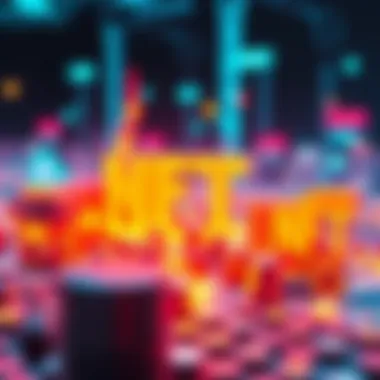
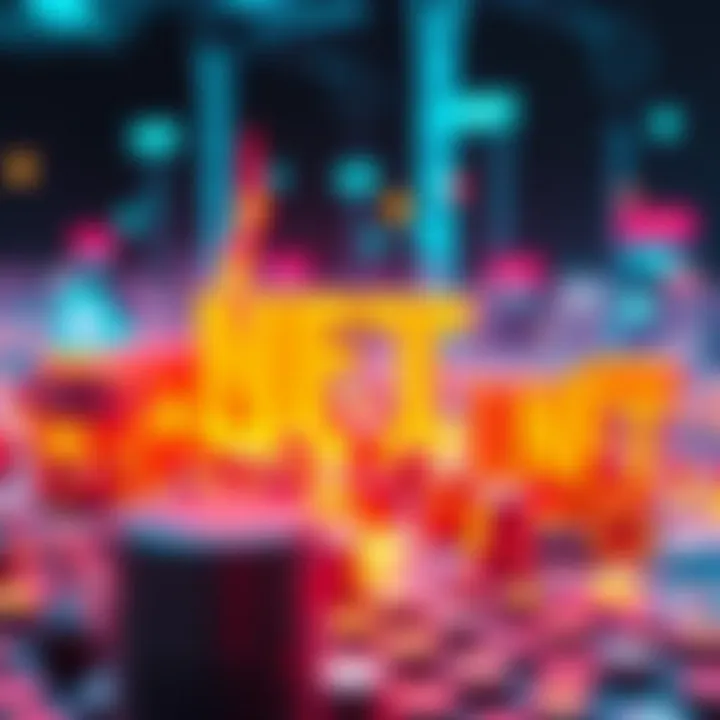
NFT creators often benefit from respectable royalty structures, allowing them to earn a percentage from every resale of their artwork. This ongoing compensation not only incentivizes the original creators but also keeps them engaged with their audience, fostering a sense of community. An added layer of complexity exists, however, as creators navigate multiple platforms, each offering different rates and mechanisms for compensation.
To summarize, the economic model surrounding NFTs is multifaceted, navigating the tightrope between rarity and accessibility while grappling with ever-changing market demands. As compensation structures continue to evolve, the potential for creators to carve out a sustainable living grows, an enticing prospect in the tech-driven art world.
Understanding these economic aspects of NFTs is pivotal for both artists and collectors, shedding light on the complex interactions that define the NFT marketplace.
For deeper insights into the mechanisms behind NFT economics, resources such as Wikipedia and Britannica provide comprehensive overviews. Creators and investors could also join discussions on platforms like Reddit to engage with authentic community voices.
Platforms Supporting NFT Creator Programs
The landscape of NFT creator programs is rich and ever-evolving, driven largely by the platforms that support them. These platforms serve as the backbone for creators looking to mint, sell, and promote their digital assets. Understanding the distinctions between different types of platforms is essential for any trader, investor, or tech enthusiast seeking to navigate the NFT space effectively.
Centralized vs. Decentralized Platforms
When evaluating platforms for NFT creation and sales, one of the key considerations is whether they operate in a centralized or decentralized manner.
Centralized platforms typically have the following characteristics:
- Control: A single entity governs the platform, making decisions on rules, transactions, and asset management.
- User Experience: They often provide user-friendly interfaces, making it easier for beginners to engage.
- Security and Trust: They generally offer stronger security measures due to their oversight, though this also means they control user assets.
Conversely, decentralized platforms function in a more distributed manner:
- Ownership: Users retain more control over their assets, as blockchain technology allows them to manage their own wallets.
- Transparency: Blockchain offers an open ledger of all transactions, enhancing trust.
- Innovation: New projects often emerge on decentralized platforms, attracting creators drawn to their flexibility.
This distinction is vital. For example, a centralized platform like OpenSea offers ease of use but comes with certain restrictions on asset management. On the other hand, a decentralized option like Rarible empowers users but may present a steeper learning curve. Ultimately, creators must weigh their priorities—whether simplicity or control matters more to them.
Notable Platforms Overview
Navigating the NFT landscape can feel daunting, but focusing on a few key platforms can ease the journey. Each platform offers unique features that cater to different types of creators:
- OpenSea: Perhaps the most recognized name, OpenSea provides a vast marketplace for both digital art and collectibles. It is very user-friendly, making it accessible for new users.
- Rarible: This platform champions artist rights, allowing creators to set their own terms for royalties and pricing. It operates now as a decentralized protocol that gives power back to the creators.
- Foundation: A more exclusive platform that invites artists based on community recommendations. It cultivates a space for high-quality work and has become a hub for both niche and emerging artists.
- Mintable: Offerig the ability to mint NFTs with just a few clicks without technical knowledge, Mintable caters to those who might be intimidated by the complexities of blockchain technology.
- Zora: Targeting creators who want more control over their projects, Zora allows for dynamic pricing of NFTs based on demand.
Each of these platforms has its own strengths and weaknesses, appealing to different niches within the NFT ecosystem. It's crucial for creators to choose a platform that aligns with their artistic vision, business model, and community engagement goals.
The future is bright for NFTs, and as the market continues to evolve, so too will the platforms supporting creators. By understanding these elements, both seasoned traders and curious newcomers can find opportunities that not only suit their needs but also contribute to the broader digital art landscape.
“The right platform can mean the difference between a creator's vision reaching the right audience and it being lost in the digital noise.”
For a deeper dive into specific platforms, you can check out OpenSea, Rarible, and Foundation.
Future Trends in NFTs and Creator Programs
As we look ahead, future trends in NFTs and creator programs emerge as a beacon of opportunity and innovation. The dynamic landscape of digital assets isn’t merely shaping the way creators interact with their audience but is also redefining ownership and value in the vast digital realm. Understanding these trends is crucial, because they not only highlight what’s on the horizon but also equip traders, investors, and enthusiasts with insights to navigate this ever-evolving ecosystem.
Evolution of NFT Marketplaces
NFT marketplaces are on a continual shift. In their early days, platforms like OpenSea and Rarible dominated, often mirroring traditional listing models seen in physical art galleries. However, as the market saturates, innovative models are emerging. More recently, platforms that emphasize a curated experience or niche audiences are gaining traction.
With the evolution of marketplaces, there are several key factors at play:
- Customization Options: New marketplaces are offering unique features, such as customizable storefronts for creators, allowing them to showcase their work in a manner that resonates with their brand.
- Community-Centric Issues: There’s a noticeable shift towards fostering communities. Some platforms allow members to vote on what projects to support or even expedite listing processes for popular demand.
- Tokenized Governance: Ideas about decentralized governance through tokens are becoming prevalent. Creators and collectors can have a say in the platform's operations, enhancing engagement and loyalty.
One significant example of this evolution is Foundation, which focuses on a more exclusive community of creators and collectors to curate artwork. This model emphasizes quality over quantity and allows creators to leverage their personal brands effectively.
The Role of Interoperability in the NFT Ecosystem
As different platforms vie for supremacy, interoperability emerges as a key player. In simple terms, interoperability allows NFTs to move seamlessly across various blockchains and marketplaces. This fluidity is not negligible; it could very well become a determining factor in the future success of the NFT market capture. Here’s why it matters:
- Enhanced Liquidity: When NFTs can function across multiple platforms, their market liquidity increases. They can be bought, sold, and traded without being tethered to a single platform’s ecosystem.
- Broader Audience Reach: Creators stand to gain from an expanded audience. As their works become easier to find and trade across varied environments, their visibility skyrockets.
- Technological Agility: Interoperability encourages platforms to push boundaries in terms of functionality and user experience, ensuring they keep up with emerging technologies like augmented reality or virtual worlds.
Ultimately, while many innovations bulldoze their way into the NFT space, interoperability may just be the glue that holds the fragmented elements of this ecosystem together, enabling a richer experience for creators and collectors alike.
Understanding the future trends in NFT marketplaces and interoperability not only positions creators and traders favorably but also enriches their engagement with the rapidly shifting landscape of digital assets.


With these insights, stakeholders can better forecast opportunities and harness the strengths of the NFT evolution, paving the way for self-expression and creative ownership in a decentralized world.
Case Studies of Successful NFT Creators
The world of NFTs is populated with creators who have not only embraced the technology but have also transformed their artistic visions into lucrative ventures. Understanding their paths provides invaluable insights into the potential of NFT creator programs. This section will delve into significant case studies that highlight the strategies employed by successful NFT creators and how they have built thriving communities around their work.
Impact of Creator Communities
Within the NFT space, community plays a pivotal role in defining an artist's success. It’s not just about selling art; it’s about fostering relationships that create a symbiotic bond between the creator and their audience.
Take, for example, the success story of Beeple, a digital artist who catapulted into mainstream fame through NFT sales. His digital collage, "Everydays: The First 5000 Days," fetched a staggering $69 million, illustrating how strong community engagement can amplify creator visibility and desirability.
A key aspect in the rise of Beeple is the interaction he maintains with his followers. He actively engages on social media platforms like Instagram and Twitter, where his updates and behind-the-scenes content generate deeper connections. These platforms serve as effective channels for building a community that is eager to support his work through purchases and promotions.
Communities not only provide a ready-made audience; they help in spreading word-of-mouth publicity. This ripple effect can snowball, presenting opportunities for collaboration, discussion, and even feedback. An engaged community often becomes ambassadors for their favorite creators, which can result in higher sales and increased brand loyalty.
Analyzing Strategies for Engagement and Sales
Understanding engagement strategies can reveal how NFT creators effectively monetize their work. Successful NFT creators employ various techniques that resonate not just with their art, but also with the market’s dynamics.
- Limited Editions: By releasing a limited number of NFTs or creating exclusivity around certain pieces, artists can increase desirability. For instance, the artist Grimes released a collection of NFTs that included never-before-seen works, capitalizing on both her existing fanbase and the essence of scarcity that NFT collectors cherish.
- Active Social Media Presence: Many NFT creators utilize platforms to showcase their work, engage with their audience, and offer transparent insights into their creative processes. Building a personal brand along with the art is crucial. Pak, another notable name in the NFT sphere, uses platforms like Twitter to provide updates and share his artistic journey, leading to a devoted following keen to support his releases.
- Collaborations: Teaming up with other artists or brands can also drive sales and boost exposure. For example, when Gala Games collaborated with the well-known filmmaker Kevin Smith, it attracted both gamers and cinephiles, helping both parties tap into new markets.
- Interactive Elements: Some creators are enhancing the buyer's experience through interactivity. NFTs that allow changes over time or involve participatory elements can keep buyers engaged. Rumble Kong League offers owners of their NFTs the chance to participate in a gaming ecosystem, enhancing the value for buyers.
Legal Considerations in NFT Creation
Navigating the world of NFTs involves not only creativity but also a keen understanding of legal frameworks that govern digital assets. Legal considerations in NFT creation are paramount, serving as the backbone for protecting creators’ rights and ensuring transactions are legitimate. This section sheds light on various aspects of intellectual property and copyright laws, which are critical for anyone venturing into the NFT space. By becoming familiar with these legal intricacies, creators can safeguard their work and avoid potential disputes.
Understanding Intellectual Property Rights
Intellectual property rights form the cornerstone of any discussion surrounding NFTs. They provide creators with the legal tools necessary to protect their unique works from unauthorized use or reproduction. Essentially, intellectual property encompasses the ownership of creations that stem from the intellect, including artistic works, music, trademarks, and inventions.
When artists turn their creations into NFTs, they must ensure that they hold all rights to the digital assets being tokenized. If the artwork uses elements created by others—like images, sounds, or text—it’s crucial to have permission or proper licensing in place. Failure to address these rights can lead to significant legal ramifications, ranging from financial penalties to the removal of the NFT from the marketplace.
It's also important to note the global nature of NFTs. Different countries have varying laws regarding intellectual property, which could impact sales and ownership across borders. Thus, having a thorough understanding of these rights is not just optional but essential for anyone operating in the NFT ecosystem.
Navigating Copyright in Digital Art
Copyright plays a vital role in how digital art is protected in the NFT marketplace. It grants creators exclusive rights to reproduce, distribute, and display their work. However, the world of digital art can be tricky, as traditional copyright laws must adapt to the uniqueness of blockchain technology and the digital medium.
When creators mint NFTs, they are not automatically transferring their copyright to buyers. This separation is crucial, as it defines what buyers can and cannot do with their purchased NFT. Creators can specify the rights accompanying the NFT, such as whether the buyer can resell the token or use it commercially. Many successful NFT platforms offer templates for these specifications, but it's always prudent to seek legal advice tailored to your specific situations.
Some key points regarding copyright include:
- Ownership vs. Copyright: Selling an NFT does not equate to handing over the copyright. Creators retain their rights unless explicitly transferred.
- Fair Use Considerations: Understand what constitutes fair use in the digital realm—this concept can often lead to confusion back when it comes to remix culture in art.
- Creative Commons Licenses: Many creators utilize Creative Commons licenses to outline the permissions of their work clearly.
In summary, comprehensively addressing legal considerations like intellectual property rights and copyright in NFT creation not only protects creators but also fosters a more respected and authentic marketplace. As the NFT landscape continues evolving, staying abreast of these laws ensures that creators can thrive without legal entanglements.
Understanding the legal environment is as crucial as creating the art itself. Ignoring it could mean taking unnecessary risks that might cost you in the long run.
For further details on intellectual property rights, consider visiting Wikipedia on Intellectual Property and for copyright specifics, check out U.S. Copyright Office.
The End
The conclusion of this exploration into NFT creator programs serves as a vital touchstone that encapsulates the nuanced landscape surrounding digital assets. It provides a crystallized vision of the multifaceted opportunities that exist but also emphasizes the significant responsibilities and considerations that creators must navigate.
Recap of Key Insights
To summarize the discussions:
- Understanding NFTs: We've covered the fundamental definitions of non-fungible tokens, emphasizing their uniqueness and ownership capabilities in the digital realm.
- Creator Benefits: Participation in an NFT creator program provides various avenues for monetization, including royalties and resale profits, which allow artists to leverage their work.
- Community Building: There's also an intrinsic value in creating a community around one’s artwork, which can enhance brand loyalty and foster collaborations.
- Challenges Ahead: However, the path isn't without its hurdles. Issues like market saturation and convoluted legal narratives can trip up even seasoned creators.
"Navigating the world of NFTs is akin to diving into a complex labyrinth – there's treasure, but also traps."
This examination highlights that while the economic models appear appealing, creators must undertake thorough due diligence to protect their intellectual property and navigate the murky waters of copyright.
Looking Ahead in the NFT Landscape
Looking forward, the NFT landscape continues to evolve. We'll likely witness:
- Technological Advancements: Innovations in blockchain technology will pave the way for even more engaging and user-friendly platforms for NFT creation and trading.
- Sustainable Practices: As environmental concerns mount, NFTs will push toward sustainability, perhaps incorporating more energy-efficient models, which could redefine how assets are minted.
- Interoperability and Integration: Closer integration between different platforms and protocols promises to enhance usability, allowing users to interact with their digital assets across a broader range of applications.
Ultimately, the future holds exciting possibilities for NFT creators. Embracing these changes while remaining aware of the challenges can empower artists to not only thrive but also redefine the notion of ownership and artistry in the digital age. In the long run, the evolution of NFT creator programs will be pivotal in shaping the global narrative around digital art and asset ownership.















